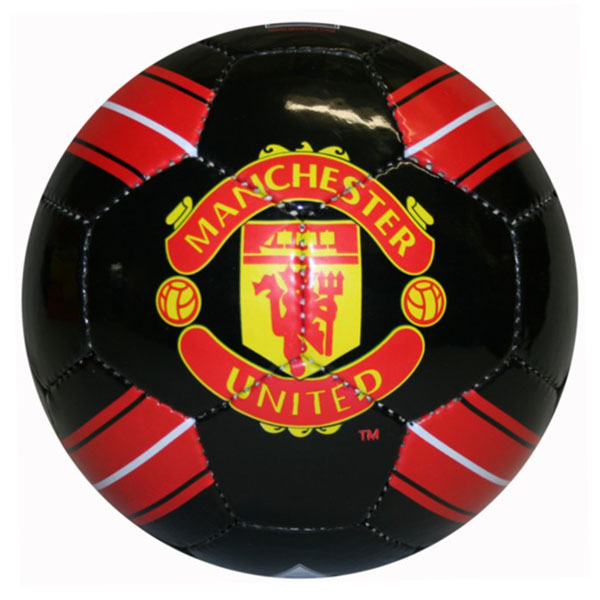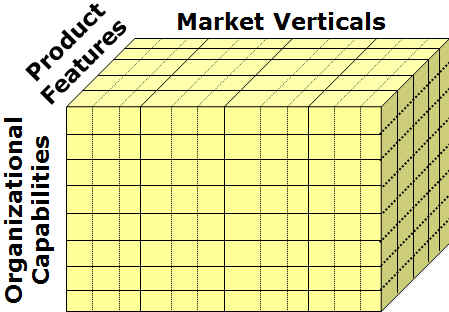The sports world is a great place to test and prove out management tactics and strategies. Unlike in the commercial world where reasons for and measurement of product success are  highly variable and of uncertain duration, sports leagues provide tightly controlled competitive conditions that enable consistent quantitative comparisons. As a result, one can clearly see winning strategies and tactics based on season over season performance. None is more remarkable than Sir Alex Ferguson’s record at Manchester United, probably the best record of any team/coach at the top leagues in any sport over the past 2+ decades. Others have written about his management style here and here.
highly variable and of uncertain duration, sports leagues provide tightly controlled competitive conditions that enable consistent quantitative comparisons. As a result, one can clearly see winning strategies and tactics based on season over season performance. None is more remarkable than Sir Alex Ferguson’s record at Manchester United, probably the best record of any team/coach at the top leagues in any sport over the past 2+ decades. Others have written about his management style here and here.
A great leader is one who gets the best from himself, his employees and customers  regardless of the situation or context, be they sports teams, armies, corporations, academic institutions, societies, etc... SAF's record is more remarkable in that it has improved the game of soccer at the same time. Ultimately everyone is subservient and bound by the objective of the team, including himself. SAF's style is best described as a disciplined command and control approach that leads to employee empowerment. SAF has grown, bought, developed, and nurtured superstars and when they've outgrown the team, they are gone.
regardless of the situation or context, be they sports teams, armies, corporations, academic institutions, societies, etc... SAF's record is more remarkable in that it has improved the game of soccer at the same time. Ultimately everyone is subservient and bound by the objective of the team, including himself. SAF's style is best described as a disciplined command and control approach that leads to employee empowerment. SAF has grown, bought, developed, and nurtured superstars and when they've outgrown the team, they are gone.
In his own words SAF says detail is important. He is probably an acolyte of Edward Tufte, who says more information is better. Through analytics SAF looks to gain the proverbial inch to give him the advantage over other teams. In the process his staff has increased from 8 to 30 people over the past 2 decades. In order to synthesize the information and implement strategy leading to individual decision making SAF has implemented an organizational matrix approach and not a management pyramid (or inverted one for that matter). The result is that on game day ManU teams are capable of making decisions on the field and have the resolve to come from behind more often than not.
Furthermore, soccer records and trophies are won not just by outright wins, as in most other sports, but by a combination of wins, goal differentials and draws. As well, Home and Away records are typically very important and a better than 50% winning percentage away from home means a lot. In the table of SAF's points analysis we see that he achieved his remarkable record not just because he won,  but because he managed to lose fewer than half his games away from home. This record was achieved because he managed the goal differential ("for" over total goals in last column) significantly in his team's favor away from home. Anybody who knows the game of soccer knows the manager's strategy and tactics before and during the game typically has more of an impact on goal differential than luck. The chart illustrates that ManU's goals for percentage mirrors the total winning points percentage. For those who don't understand the subtleties of soccer's scoring, a 0-0 draw away from home can be the deciding factor in a trophy if a home win is managed. Furthermore drawing 0-0 away from home to a big club is synonymous with a victory during the regular season. (Of course an away goal in a cup competition is worth more than a home goal.)
but because he managed to lose fewer than half his games away from home. This record was achieved because he managed the goal differential ("for" over total goals in last column) significantly in his team's favor away from home. Anybody who knows the game of soccer knows the manager's strategy and tactics before and during the game typically has more of an impact on goal differential than luck. The chart illustrates that ManU's goals for percentage mirrors the total winning points percentage. For those who don't understand the subtleties of soccer's scoring, a 0-0 draw away from home can be the deciding factor in a trophy if a home win is managed. Furthermore drawing 0-0 away from home to a big club is synonymous with a victory during the regular season. (Of course an away goal in a cup competition is worth more than a home goal.)
So how did SAF manage this? As a soccer purist, I love the style of play that is uptempo and attacking. As a former defender I love when ManU’s right or left defenders become 3rd and 4th attackers up the wings. But at the same time, striking the correct balance offensively and defensively is key. By establishing a matrix approach SAF made it easier to move players around between and during games and to identify and increase their value relative to other players around them, so that a weakness in one area can be countered with strength in another. Furthermore, the matrix approach empowers weak players and makes superstars out of "ordinary" players like Ryan Giggs and Paul Scholes; whom many would never have guessed to have such an impact on the team, or the game, as individuals.

In a matrix, employees have a 3D view of their decisions and the impact on the rest of the organization (resource constraints/availability). From a tactical perspective (micro level) it enables forwards to play midfield and help on defense and defenders to develop the attack and even score. A good example is a player like Valencia who used to just be a wing at another team, but has become a very dangerous midfielder and at times has started at right-back for an injury-riddled defense this season. Strategically (at a macro level), the matrix defines key technology/product (supply) and customer/market (demand) parameters. With a matrix approach micro and macro perspectives can be easily related. For instance, SAF would never have let an individual player take over an entire organization’s public perception as Luis Suarez has at Liverpool this season.
Because of the matrix SAF’s strongest player is often the one others' consider weakest. Rather than focusing on his superstars, he focuses on getting the superstars to work with the weakest players and vice versa. Bringing this closer to home and more timely, the New York Knicks should implement a matrix approach both at the management/organizational and team levels. Just look at the benefit the team gets from a player considered weak, Jeremy Lin, but who passes the ball effectively to very talented players versus superstars like Carmelo Anthony or Baron Davis who have a hard time being “matrix” players. Every organization should develop its matrix and understand how employees play together as a team and how the organization is positioned in competitive industries.
Related Reading
Josh Linkner: Next Play, Mike Krzyzewski and Linkedin
John Doerr of KPCB used football example for OKRs for Google
No player is above the team according to SAF
Why soccer is so hard to predict